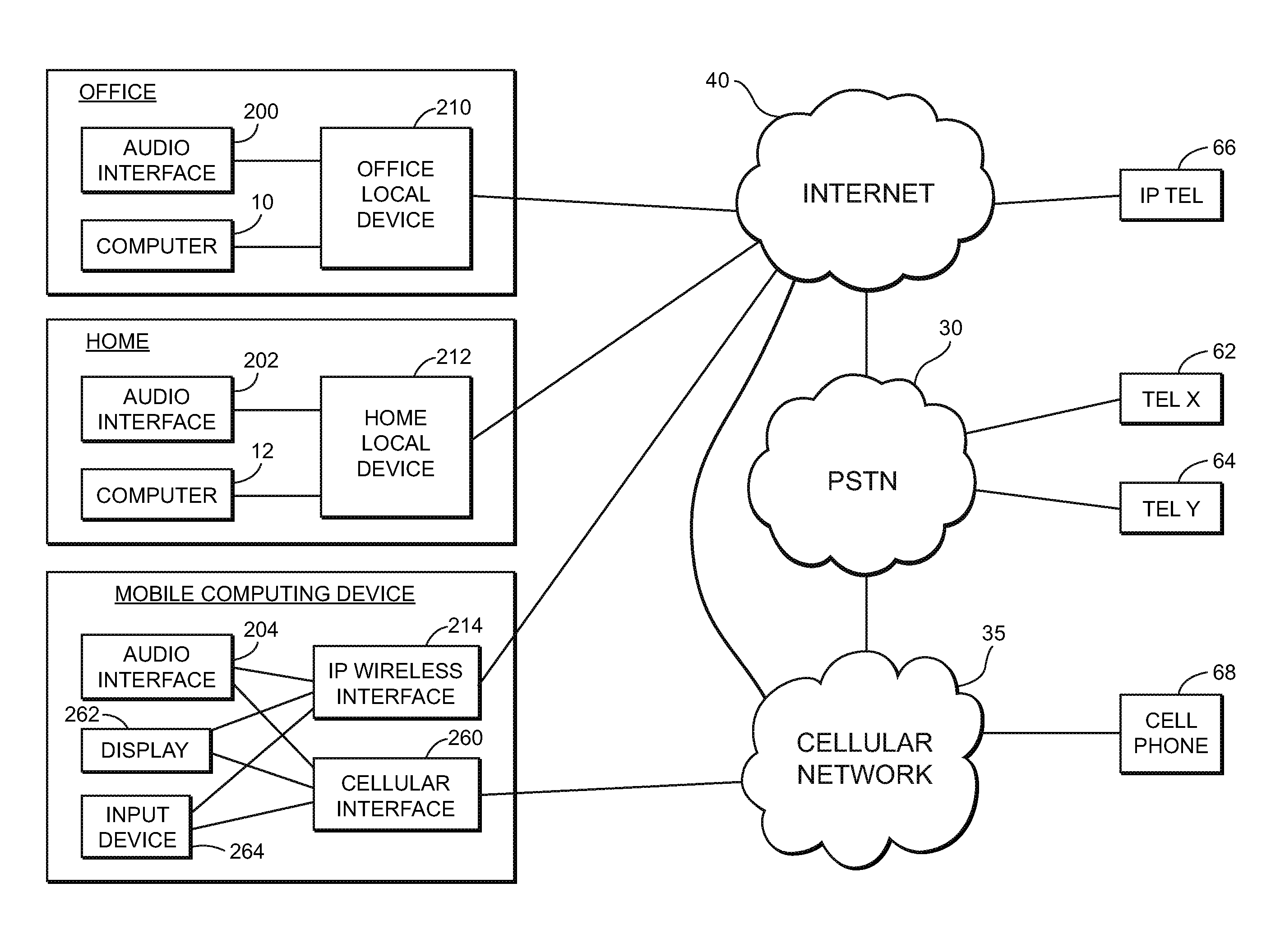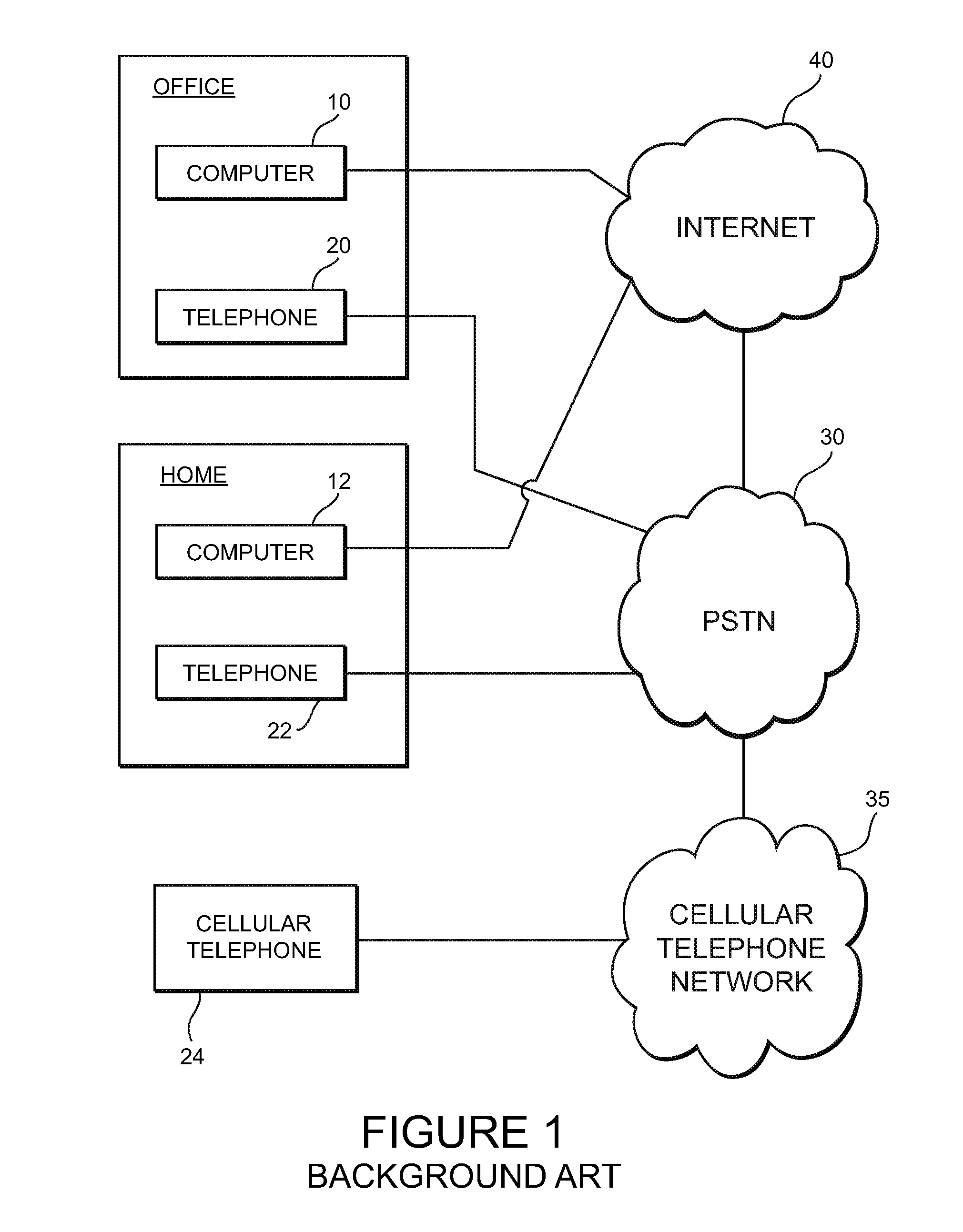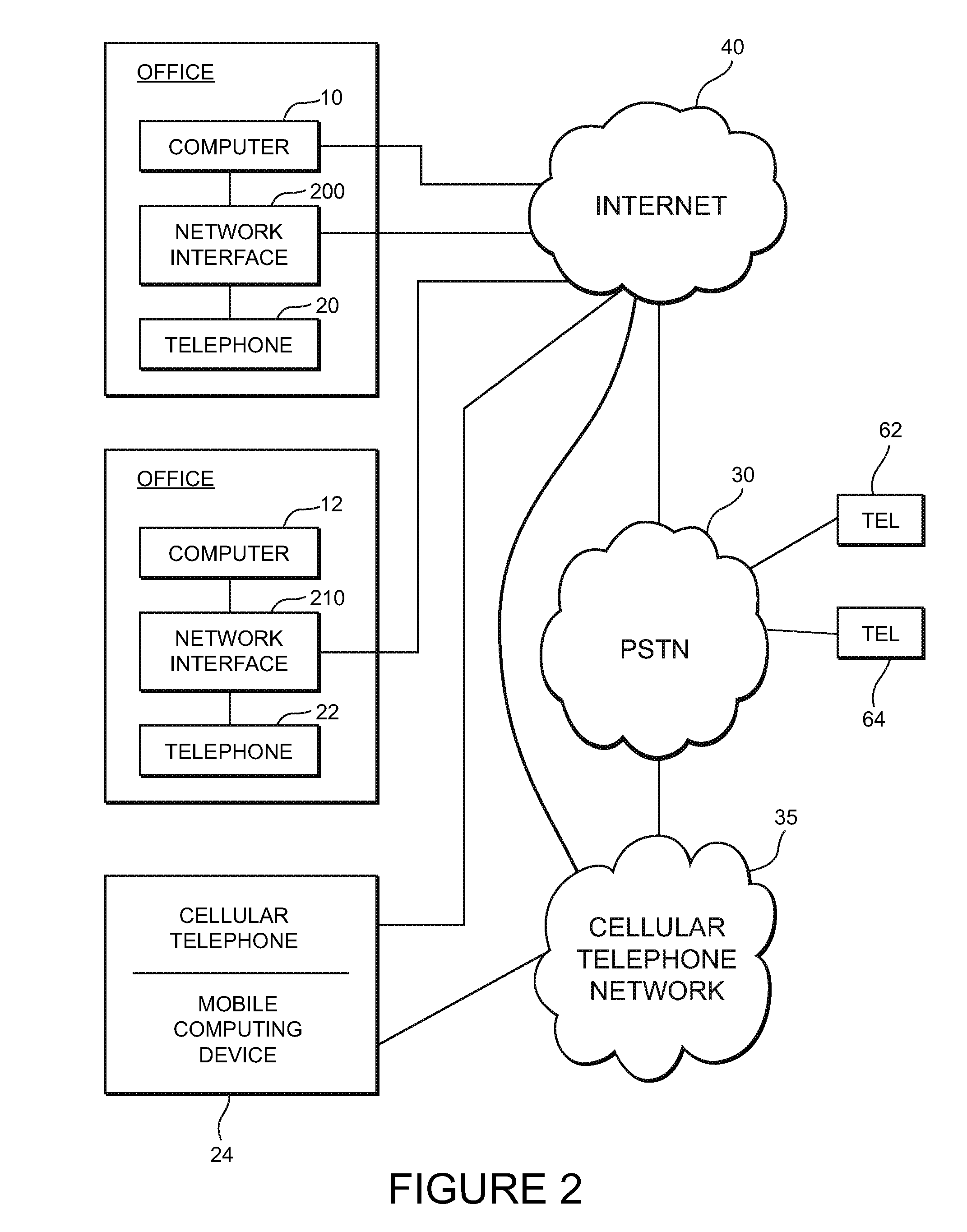System and method for announcing and routing incoming telephone calls using a distributed voice application execution system architecture
- Summary
- Abstract
- Description
- Claims
- Application Information
AI Technical Summary
Problems solved by technology
Method used
Image
Examples
Embodiment Construction
[0025]In recent years, the architecture model for computers and telephones has been slowly evolving towards the architecture illustrated in FIG. 2. In this architecture, the telephones 20, 22 are coupled to network interfaces 200, 210, which are themselves directly coupled to the Internet 40, or at least to a high speed digital data network. The computers 10, 12 may still be directly coupled to the Internet 40, or they may obtain access to the Internet through the network interface devices 200, 210. Of course, some telephones 62, 64 are still directly coupled to the PSTN 30.
[0026]In the new architecture illustrated in FIG. 2, the network interfaces 200, 210 would convert analog signals generated by traditional analog telephone devices into digital data streams, and these digital data streams would be communicated over the Internet. In implementing a telephone call between two telephones that are connected to the Internet via network interfaces devices, the entire path traveled betwe...
PUM
 Login to view more
Login to view more Abstract
Description
Claims
Application Information
 Login to view more
Login to view more - R&D Engineer
- R&D Manager
- IP Professional
- Industry Leading Data Capabilities
- Powerful AI technology
- Patent DNA Extraction
Browse by: Latest US Patents, China's latest patents, Technical Efficacy Thesaurus, Application Domain, Technology Topic.
© 2024 PatSnap. All rights reserved.Legal|Privacy policy|Modern Slavery Act Transparency Statement|Sitemap



